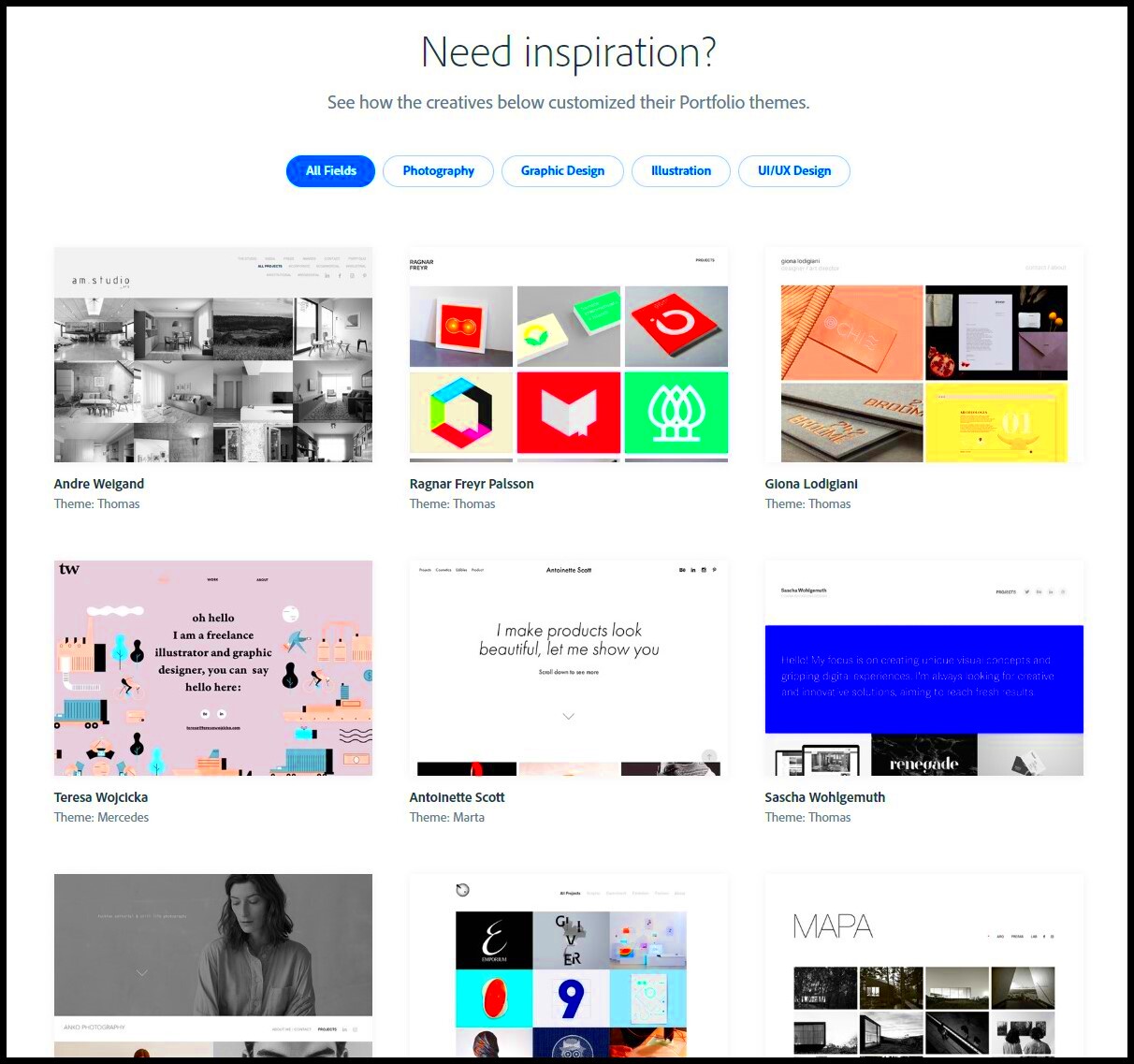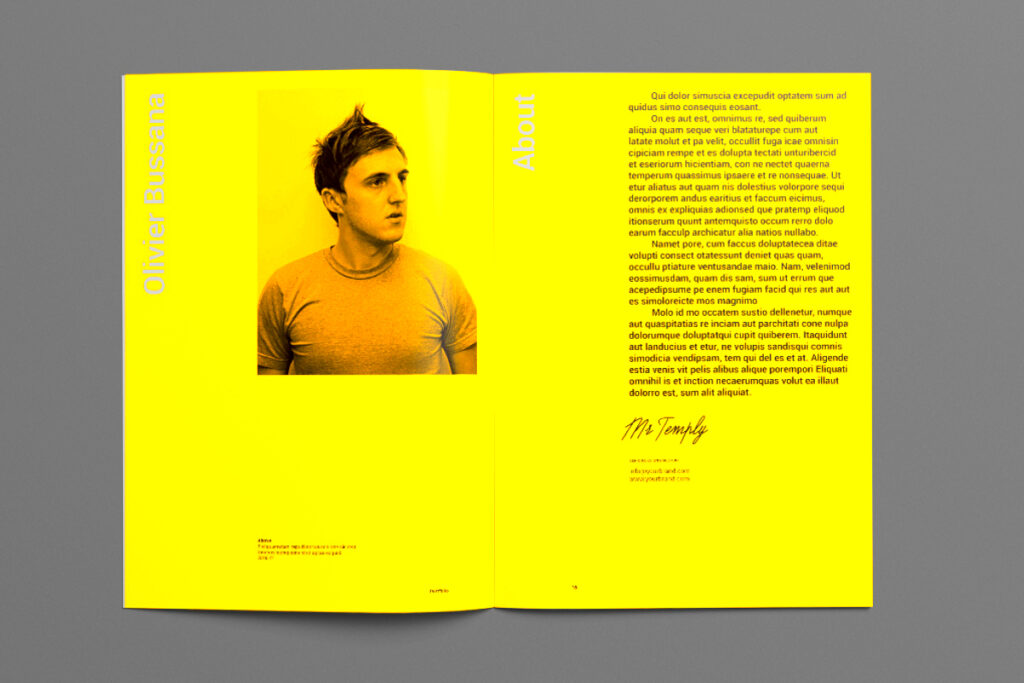Crafting a portfolio on Behance is akin to curating a personal art showcase. Its not merely a platform to display your creations but also a way to narrate your story and showcase your individuality. A thoughtfully arranged portfolio has the potential to pave the way for fresh prospects partnerships and even job opportunities. I recall feeling awestruck by the incredible talent I encountered when I embarked on my Behance journey. It pushed me to elevate my skills and I quickly came to understand that an impressive portfolio plays a role in leaving a mark, within the creative sphere.
What makes it crucial? Here are a couple of points to consider.
- First Impressions Matter: Your portfolio is often the first thing potential clients or employers see. Make it count!
- Showcases Your Skills: It highlights what you can do, demonstrating your creativity and technical abilities.
- Builds Your Brand: A strong portfolio helps you establish a personal brand that resonates with your audience.
- Network Growth: It can attract other creatives and professionals, leading to collaborations and networking opportunities.
In short your Behance portfolio serves as a representation of your creativity online. So invest some effort into making it stand out!
Choosing the Right Projects to Showcase

Choosing the projects to showcase in your Behance portfolio can be overwhelming, but it’s an important part of presenting your creative path genuinely. I recall dedicating time to selecting the works to feature in my portfolio and it made a significant difference. Here are some insights I gained during the process:
- Quality Over Quantity: It's better to showcase a few exceptional pieces than to flood your portfolio with mediocre work. Aim for projects that highlight your strengths.
- Diversity is Key: Including a variety of styles or mediums demonstrates your versatility as an artist. It shows that you can adapt and innovate.
- Personal Projects Matter: Don't shy away from including personal projects that reflect your passions. They often resonate more deeply with viewers.
- Client Work and Collaborations: If you’ve worked with clients, feature those projects as they add credibility and showcase your ability to meet specific requirements.
In the end, pick endeavors that showcase your journey and evolution as a creative. Its all about being true to yourself.
Also Read This: Free Downloads from Depositphotos: Your Guide
Crafting Compelling Project Descriptions
After choosing your projects the next task is to write engaging descriptions that enhance your creations. This is an opportunity to provide insights into the context, the motivation for each piece and your artistic journey. I frequently notice that audiences value knowing the narrative behind the artwork as it fosters a stronger connection with it.
Here are a few suggestions to help you craft project descriptions that captivate your audience.
- Be Personal: Share your thoughts and feelings about the project. What inspired you? What challenges did you face?
- Use Clear Language: Avoid jargon and technical terms that might alienate viewers. Write as if you’re talking to a friend.
- Highlight Your Process: Briefly describe how you created the project, including any techniques or tools you used. This adds depth and interest.
- Keep it Concise: Aim for clarity and brevity. Too much text can overwhelm the viewer. A few well-chosen words often speak louder.
Keep in mind that a thoughtfully written project description has the power to enhance your work and create a memorable impact. Its an opportunity to engage with your audience more profoundly.
Also Read This: How to Access MASN on YouTube TV for Regional Sports Viewing
Selecting Eye-Catching Cover Images
Selecting an image for your Behance projects is akin to choosing the ideal frame for a stunning artwork. Its often what catches peoples attention first and as the saying goes you only get one shot at making a lasting impression. I vividly remember the moment I discovered the impact of a compelling cover image while giving my portfolio a makeover. The boost in engagement was truly remarkable!
Here are a few suggestions to make sure your cover visuals stand out and catch the eye.
- High Quality: Always use high-resolution images. Blurry or pixelated images can tarnish your credibility.
- Relevant Content: Choose images that reflect the essence of your project. It should give viewers a hint of what to expect.
- Bold Colors: Bright and contrasting colors can catch the eye. However, ensure they align with your overall aesthetic.
- Showcase Your Style: The cover image should reflect your unique style. This helps in creating a memorable visual identity.
Don’t forget that your cover art is more than just an image; it’s a gateway to your imagination. Ensure it welcomes the audience!
Also Read This: How to Download Music from YouTube to iTunes
Utilizing Tags and Categories Effectively
While tags and categories on Behance might appear to be insignificant aspects, they serve as immensely potent resources for boosting the exposure of your creations. I was truly astonished by the surge in traffic to my projects when I began employing tags with intention. It’s akin to providing a guide for your art, assisting individuals in discovering precisely what they seek.
To make the most of your tags and categories keep these things in mind.
- Relevance is Key: Use tags that accurately describe your project. Misleading tags can frustrate viewers and may lead to a negative impression.
- Use Popular Tags: Research popular tags in your niche. This can help your work reach a broader audience.
- Limit the Number: Avoid overloading your projects with tags. A few well-chosen tags are far more effective than a long list.
- Update Regularly: As trends change, revisit your tags and categories to ensure they stay relevant.
When you make smart use of tags and categories, you boost your opportunities to be found by other artists and potential customers.
Also Read This: Does Telegram Automatically Save Deleted Messages
Creating a Consistent Visual Style
Maintaining a cohesive look throughout your Behance portfolio is crucial for defining your brand image. I recall when I first started my creations were quite scattered in terms of hues and designs. It wasn't until I discovered my distinct style that my portfolio started to connect with audiences on a deeper level. Consistency fosters familiarity and confidence making your work more unforgettable.
Here’s a guide on how to develop a consistent visual aesthetic.
- Choose a Color Palette: Select a few colors that represent your style and use them consistently across your projects. Tools like Adobe Color can help in finding the perfect palette.
- Stick to Specific Fonts: Use a limited number of fonts that complement your designs. This not only unifies your work but also enhances readability.
- Maintain Similar Layouts: Whether it's the way you present images or the structure of your project descriptions, consistency in layout helps tie everything together.
- Reflect Your Personality: Your style should feel authentic to you. Don’t hesitate to incorporate elements that resonate with your cultural background or personal experiences.
Establishing a cohesive visual identity goes beyond mere looks; it’s a way to convey your essence as a creator. When audiences can instantly identify your creations you’ve effectively carved out your unique space in the world of artistry.
Also Read This: Ultimate Guide to Making Fondant with Marshmallows
Engaging with the Behance Community
Engagement is crucial for any creative platform and Behance is no different. When I initially signed up for Behance I mistakenly believed that just sharing my work would be enough. However I soon realized that building connections within the community holds significance too. It's akin, to immersing yourself in a bustling marketplace filled with ideas and creativity where every interaction has the potential to open doors, to fresh possibilities.
To make the most of your interactions with the Behance community consider these tips
- Commenting on Other Projects: Take the time to leave thoughtful comments on projects you admire. It shows appreciation and encourages reciprocation.
- Following Creatives: Follow artists whose work resonates with you. This not only keeps you inspired but also builds a network of like-minded individuals.
- Sharing Insights: Share your thoughts on trends or techniques in the comments section. Your perspective could help others while positioning you as a knowledgeable contributor.
- Participating in Groups: Join Behance groups that align with your interests. This can lead to collaborations and constructive feedback from fellow artists.
Connecting with people goes beyond showcasing yourself. Its about fostering authentic connections. Every conversation has the potential to pave the way for surprises, in terms of partnerships or friendships that enhance your artistic path.
Also Read This: Mastering LinkedIn for Effective Professional Networking
FAQs about Designing a Behance Portfolio
When you start putting together your Behance portfolio, you're likely to have some questions. Drawing from my own experiences and observations within the community, I've compiled a list of common queries that can help steer you in the right direction.
- How many projects should I include? Aim for quality over quantity. A handful of exceptional pieces that reflect your best work is better than many mediocre ones.
- What should I include in my project descriptions? Discuss your creative process, the inspiration behind the work, and any challenges you faced. It helps viewers connect with your art.
- Is it important to respond to comments? Yes! Engaging with those who take the time to comment shows appreciation and builds a community around your work.
- How can I promote my portfolio outside of Behance? Share your Behance link on social media platforms, in your email signature, or even in your resume to broaden your audience.
Keep in mind that each query presents a chance to enhance your skills and strengthen your collection. Feel free to seek guidance or perspectives from others without reservation.
Conclusion on Building an Impressive Portfolio
Crafting a unique Behance portfolio involves showcasing your creations in a way that truly represents your essence as a creative person. Along this path, I've come to realize that being genuine, maintaining a consistent style and actively engaging with the community are key elements for building a portfolio. Your creations should narrate a story that strikes a chord with the audience encouraging them to view the world from your perspective.
As you set out on this adventure, remember the significance of.
- Choosing the right projects to showcase your skills and personality.
- Crafting compelling descriptions that engage and inform your audience.
- Building a consistent visual style that reflects your unique brand.
Lastly keep in mind that your portfolio is a work in progress. As you develop and change as an artist your portfolio should reflect that too. Be open to feedback maintain a sense of curiosity and dont hesitate to try out new things. By doing this you'll not create a portfolio but also embark on a rewarding artistic journey.
